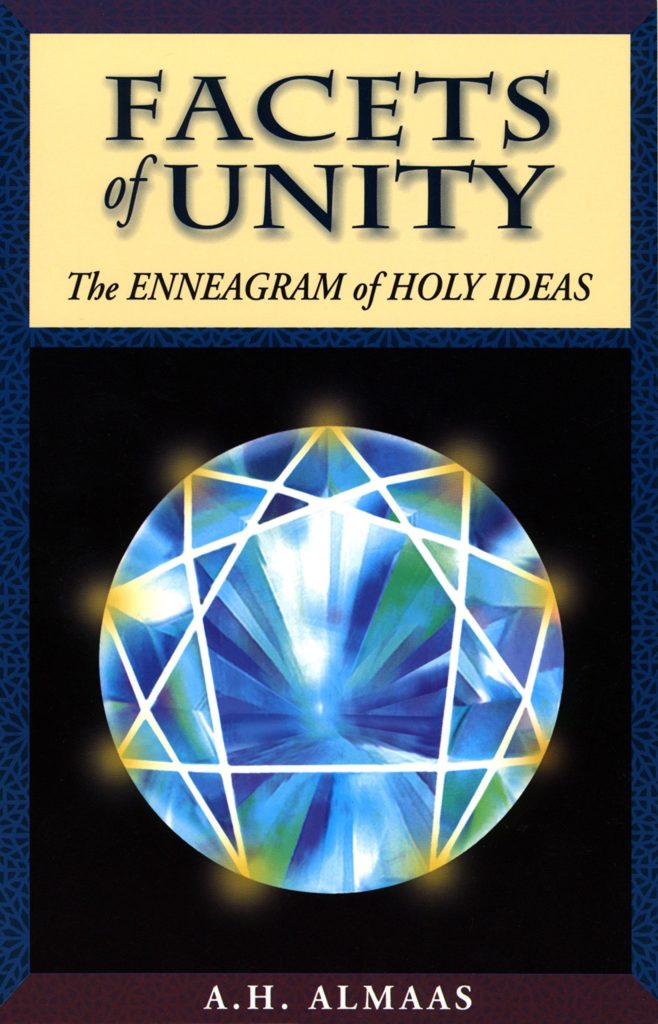
Revelation is the fulfillment of not-knowing
We enter this world in a nondual state, but within a few years we start to inhabit a subject/object reality, a life of duality. The status quo of a “normal” life is divided into me and other.
Knowing is reduced to comparison, as our mind’s knowledge is based on what we already know. Even “new” discoveries are known and understood using comparison.
Words themselves can become an endless loop of comparison, with every definition based on the use of existing knowns to define the new.
This recognition of the nondual ground of experience is the realization that there is basically only presence. Presence is what exists, what is, and everything that exists is a form that presence takes. Reality is one unified field of luminosity that differentiates itself into the various perceptions that we have. Thus, True Nature and Being are really the same thing as truth or reality. All those terms mean the same thing: presence that is in a condition of conscious full realization. In this condition, experience is not filtered through the mind; things are experienced exactly as they are. We see their nature and recognize that it is True Nature—which turns out to be the nature of everything, all the way down to the tiniest particle. This means that nothing exists but True Nature. It pervades everything so intimately, so completely, that it doesn’t leave any one spot unoccupied by it.
– A. H. Almaas, The Unfolding Now
When we have spiritual experiences, the mind uses the known in an attempt to describe experiences beyond our known world. It happens instantaneously by simply languaging in our heads so that we can know what’s happening.
Another way of looking at this is that true nature appears in ways that our mind can make sense of. This, in part, is one reason why inner deities can appear in one form to a Hindu and another form to a Buddhist and another to a Christian.
Since the sixties, people in this country have been reading books on Zen, Taoism, Vedanta, Yoga, and Buddhism, so their minds are conditioned by the ideas and concepts in these teachings. Therefore, when you start to inquire and want to allow your nature to manifest, many of these concepts from Eastern paths, or the ones from indigenous religions, will tend to arise in your mind: “Aha! This is what Vedanta says . . . and Buddhism believes that . . . and here is what Christianity teaches,” and so on. You become mentally involved and excited: “Oh yeah, that’s what the experience I just had means,” and you try to fit what is arising into a certain mold. You tend to feel happy when you fit within a certain model for a while. You take that as a corroboration or confirmation of your experience.
– A. H. Almaas, Spacecruiser Inquiry, ch. 11

What would experience be like without prior knowledge? Would recognizable experience even be possible without prior knowledge? If only we could ask a newborn!
Experiential Knowing
The Diamond Approach emphasizes experiential knowledge and understanding over conceptual, comparative knowing. It does this without throwing the baby out with the bathwater, by recognizing the function and usefulness of comparative knowing as well as its necessity for living in this dimension of reality.
The known can place limits on potential and possibilities. How we envision the end of the spiritual journey or the enlightenment of the soul may pre-define what’s possible. The Diamond Approach doesn’t posit an ultimate reality, and the central methodology of the Diamond Approach is open and open-ended inquiry. These fundamentals keep everything wide open, allowing each soul to unfold according to its uniqueness, not some prescribed cookie-cutter reality intended for all.
The openness to engaging experience where you are is more important than whether you happen to be in a dual or nondual state. Spiritual bypassing can happen otherwise.
– A. H. Almaas

Is it Possible to Seek Nonduality?
Nonduality may become important to you, and you may want to seek out the experience. Maybe you had an experience of nonduality and want to understand it better.
Normally, from the dual perspective, we’d Google nonduality, buy books, read articles, go to talks and workshops for guidance, direction, and more understanding. Chances are we’d engage in meditation or other spiritual practices.
Will any of this bring us closer to the nondual? Can remembering a nondual experience bring it back?
St. Francis said, “What we are looking for is what is looking.” And therein lies the conundrum – how can you find what you already are?
Is There an Ultimate Reality?
Each teaching posits a final or absolute ground of Being that forms the irreducible simplicity of true nature. We refer to this ground as the absolute dimension of Being. The understanding of this ultimate true nature of the self and everything differs in subtle ways from one teaching or philosophy to another. In Christianity, it is the father who is the inscrutable darkness; in Kabala, it is the ain (nothing) or ain sof (infinite); in Sufism, it is the divine Essence; in Buddhism, it is emptiness (sunyata) or Buddha nature (tathagatagarbha); in Taoism, it is the Tao or the nothing; in Vedanta, it is the Brahman or absolute self; in Kashmir Shaivism, it is Shiva; and so on. The spiritual quest becomes that of the soul integrating this ultimate nature as its inner nature, source, and sometimes its identity. – A. H. Almaas, The Point of Existence, ch. 42
“Advaita (nonduality) does not mean “one” in the sense of eliminating all differences. The differences are present in the one in a mysterious way. They are not separated anymore, and yet they are there.” – Bede Griffiths
Life – in fact, existence – is a dance between not-knowing and revelation, between being and nonbeing, between emptiness and manifestation. There is great joy and aliveness (adventure) in walking on the wild side, by allowing your experience to inform and educate you on your spiritual journey.

Nonduality and the Enneagram
Almaas says points 8, 9, 1, and 5 have to do with the realization of the nondual. The other points relate to the actualization of the nondual.
The experience of nondual realization comes first, then it becomes permanent, then you have to actualize it.
Reality has a dynamic dimension: it is always manifesting things in a different way moment to moment – the world is always changing. What is also changing is the way we experience inner realizations.
This is the part that many people don’t get – they experience realization and think when they start living it, they will take what they have experienced into different situations – the same me – unchanged, but enlightened. In fact, actualization means change, even identity changes.
In the experience of nonduality, it is not as though physical reality were a dream emanating from it — that perception would still be dualistic. When duality is seen through, physical reality is imbued with the essential dimension, and the two become one. This gives the physical more reality, more substance, more existence, more meaning, more depth, and more dimensionality. When you look at people, they seem more substantial, and even their bodies appear more physical, in a sense. Every object and person has a concreteness and a definiteness that makes each appear more defined, more present, and more complete because your experience of them includes the depth of the true existence. When everything is perceived as the Absolute, each atom, each form, has its depth. The Absolute not only underlies everything but penetrates all manifestation. Depending upon which dimension you are experiencing, everything you perceive acquires the depth and beauty of that dimension. – A. H. Almaas, Facets of Unity

There are several things about this book that particularly intrigued me. One of them is the author’s insistence that all people have difficulty with all nine Holy Ideas, so that a person who is designated as being a certain type really only has a relative degree of difficulty with the particular Holy Idea associated with that type. Viewing it this way moves one away from thinking in terms of a personality typology and more in the direction of a universal human challenge to see reality clearly. Because of the interests I mentioned earlier, I was particularly intrigued with the way in which the author frames the difficulties of seeing reality within a particular psychological point of view as having not only psychological implications but also psychotherapeutic implications. In particular, Almaas makes frequent references to Winnicott and his concepts of the holding environment and basic trust. Essentially he says that one must either be fortunate enough to find basic trust early in life through an adequate parental holding environment, or one must find later in life a sufficiently safe holding environment that will allow for the development of basic trust. Almaas makes clear that doing this work as an adult––i.e. pursuing the attainment of the direct awareness of the nature of reality––requires working through the specific psychological and spiritual injuries and deficiencies resulting from one’s personal history. Although the ultimate goal is enlightenment or self-realization, the difficult psychotherapeutic work that will be required is not ignored, as it seems to me it often is by those who have had a brief glimpse of such a state and the possibilities it presents. – John R. Head
